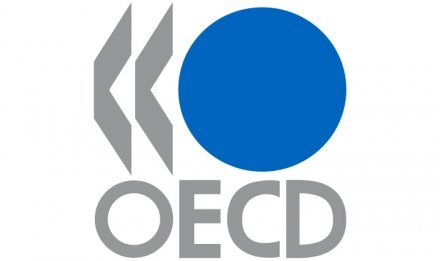by David Steven | Mar 26, 2015 | Conflict and security, Cooperation and coherence, Economics and development, Global Dashboard, Global system

This afternoon, in New York, the OECD is launching its States of Fragility 2015 report which explores how new sustainable development goals and targets (SDGs) can be implemented in countries and communities that lack the political stability and institutions to support inclusive growth, or that are affected by very high levels of violence.
The report was written with colleagues at New York University’s Center on International Cooperation and is part of a broader effort to switch the focus from what should be part of the post-2015 development agenda, towards how the new agenda can be delivered.
It argues that we have no hope of delivering the SDGs in large parts of the world, unless we get serious about tackling fragility.
Robust global growth, and more equitable patterns of distribution, have the potential to lead to rapid and continued further reductions in all forms of poverty, but this would mean that those left behind would increasingly live in fragile situations. (more…)
by Seth Kaplan | Feb 3, 2013 | Conflict and security, Economics and development

The Organisation for Economic Co-operation and Development (OECD) Development Assistance Committee (DAC) and its International Network on Conflict and Fragility (INCAF) do an admirable job bringing together policymakers, collecting and synthesizing information, and helping set the agenda for donors.
But, as exemplified by Emmanuel Letouzé’s (lead author) and Juana de Catheu (co-author)’s recent report Fragile States 2013: Resource Flows and Trends in a Shifting World, its analysis of fragile states is flawed in a couple of important ways. (more…)
by David Steven | Dec 4, 2012 | Climate and resource scarcity, Economics and development, Global Dashboard, UK
Like all right-thinking people, I am passionately opposed to fossil fuel subsidies. What could be worse than paying people to accelerate the rate at which we are screwing the climate?
So I was shocked to discover – courtesy of Bloomberg’s coverage of the climate talks in Doha – that:
Rich countries spend five times more on fossil-fuel subsidies than on aid to help developing nations cut their emissions and protect against the effects of climate change.
Even worse, when I tracked down the report that Bloomberg had drawn their story from, I found that the UK is one of the worst offenders. According to the campaigning group, Oil Change International, the British taxpayer shelled out $6.6 billion in fossil fuel subsidies in 2011, but pledged only $793 million in ‘fast-start climate finance” that year.
Outrageously, for the UK, subsidies are over eight times greater than climate finance. I simply had no idea that the government of my own country was pumping so much money into oil, gas, and coal. Quite embarrassing really.
So where does this money go? Margaret Thatcher shut down the UK’s coal industry, while I’d always assumed that North Sea Oil was profitable without subsidy. Motorists, meanwhile, are always complaining about how much additional tax they pay on petrol and diesel (Daily Mail: “We’re the fuel tax capital of Europe.”)
Who then is getting 6 billion dollars a year?
(more…)
by Alex Evans | Sep 27, 2010 | Economics and development, Europe and Central Asia, UK

A new OECD report finds Britain has the highest rates of overweight and obesity in the EU, and rates 5th overall (after the US, Mexico, NZ and Australia). Japan and Korea are the trimmest kids on the bloc, but the problem’s getting worse everywhere.
And guess what – Italy’s the least overweight EU member of the OECD. Who knew?
by Alex Evans | Jun 17, 2010 | Climate and resource scarcity, Economics and development
This year’s OECD / FAO agricutural outlook, which looks ahead over the period from 2010 to 2019 (news release; summary), didn’t get terribly extensive coverage in the media – unsurprisingly, given that its key message (“real commodity prices to remain below recent peaks but well above recent decades”) is exactly the same as it was in last year’s report.
But as soon as you start to delve into the quant projections, you see that there’s actually a big difference between this year’s and last year’s report – and not an encouraging one.
Last year, the 2009 to 2018 outlook (summary) projected that over the decade ahead, “average crop prices are projected to be 10-20% higher in real terms relative to 1997-2006, while for vegetable oils real prices are expected to be more than 30% higher”.
This year? “Average wheat and coarse grain prices are projecte to be nearly 15-40% higher, while for vegetable oils real prices are expected to be more than 40% higher”. Most media coverage didn’t pick up on this (though the FT, as usual, did).
That’s a big deterioration of the outlook in just twelve months. So what explains it? I can’t immediatelymake out the reason, so I’ve emailed FAO’s press office to see if we can get some more detail for them. But as I noted in The Feeding of the Nine Billion (pdf), the OECD / FAO outlook is in some ways unduly optimistic – as in the past it has “largely overlooked the potential impact of long-term resource scarcity trends, notably climate change, energy security and falling water availability”.



